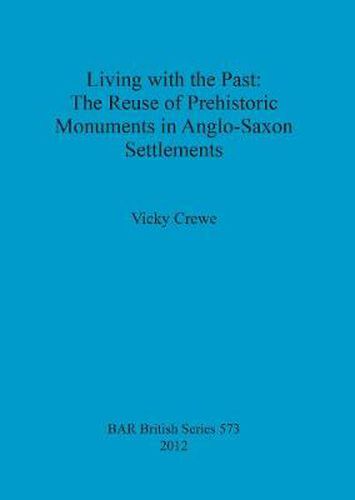Readings Newsletter
Become a Readings Member to make your shopping experience even easier.
Sign in or sign up for free!
You’re not far away from qualifying for FREE standard shipping within Australia
You’ve qualified for FREE standard shipping within Australia
The cart is loading…






This title is printed to order. This book may have been self-published. If so, we cannot guarantee the quality of the content. In the main most books will have gone through the editing process however some may not. We therefore suggest that you be aware of this before ordering this book. If in doubt check either the author or publisher’s details as we are unable to accept any returns unless they are faulty. Please contact us if you have any questions.
To date there has been little systematic study of the appropriation of, or attitudes to, prehistoric monuments in settlements of the period. The objectives of the research presented here are twofold. Firstly, it assesses how widespread the reuse of prehistoric monuments was in early to middle Anglo-Saxon settlements. In so doing, it examines the types of settlements in which the activity occurred and the types of prehistoric features that were reused. This is achieved through a review of the Anglo-Saxon settlement evidence in a regional study area. The settlements discussed in this study date to the period c.AD 450-850, with a regional focus based on central England, defined here to the north by the Humber and to the south by the Thames. In addition to well-known and published sites, this review makes use of data that is less frequently discussed in archaeological discourse, such as partially excavated or unpublished settlements that have not previously attracted a great deal of attention from scholars. The second aim is to assess how, and particularly why, monuments were appropriated in settlements. In order to answer these questions an in-depth, site-by-site approach is taken, in which the layout and use of space in a number of case studies are analysed. These case studies allow greater understanding of the ways in which older monuments could be referenced in settlements, how reuse changed over time, and why monuments may have been significant. Four Gazetteers provide locational and reference data to the selected sites.
$9.00 standard shipping within Australia
FREE standard shipping within Australia for orders over $100.00
Express & International shipping calculated at checkout
This title is printed to order. This book may have been self-published. If so, we cannot guarantee the quality of the content. In the main most books will have gone through the editing process however some may not. We therefore suggest that you be aware of this before ordering this book. If in doubt check either the author or publisher’s details as we are unable to accept any returns unless they are faulty. Please contact us if you have any questions.
To date there has been little systematic study of the appropriation of, or attitudes to, prehistoric monuments in settlements of the period. The objectives of the research presented here are twofold. Firstly, it assesses how widespread the reuse of prehistoric monuments was in early to middle Anglo-Saxon settlements. In so doing, it examines the types of settlements in which the activity occurred and the types of prehistoric features that were reused. This is achieved through a review of the Anglo-Saxon settlement evidence in a regional study area. The settlements discussed in this study date to the period c.AD 450-850, with a regional focus based on central England, defined here to the north by the Humber and to the south by the Thames. In addition to well-known and published sites, this review makes use of data that is less frequently discussed in archaeological discourse, such as partially excavated or unpublished settlements that have not previously attracted a great deal of attention from scholars. The second aim is to assess how, and particularly why, monuments were appropriated in settlements. In order to answer these questions an in-depth, site-by-site approach is taken, in which the layout and use of space in a number of case studies are analysed. These case studies allow greater understanding of the ways in which older monuments could be referenced in settlements, how reuse changed over time, and why monuments may have been significant. Four Gazetteers provide locational and reference data to the selected sites.